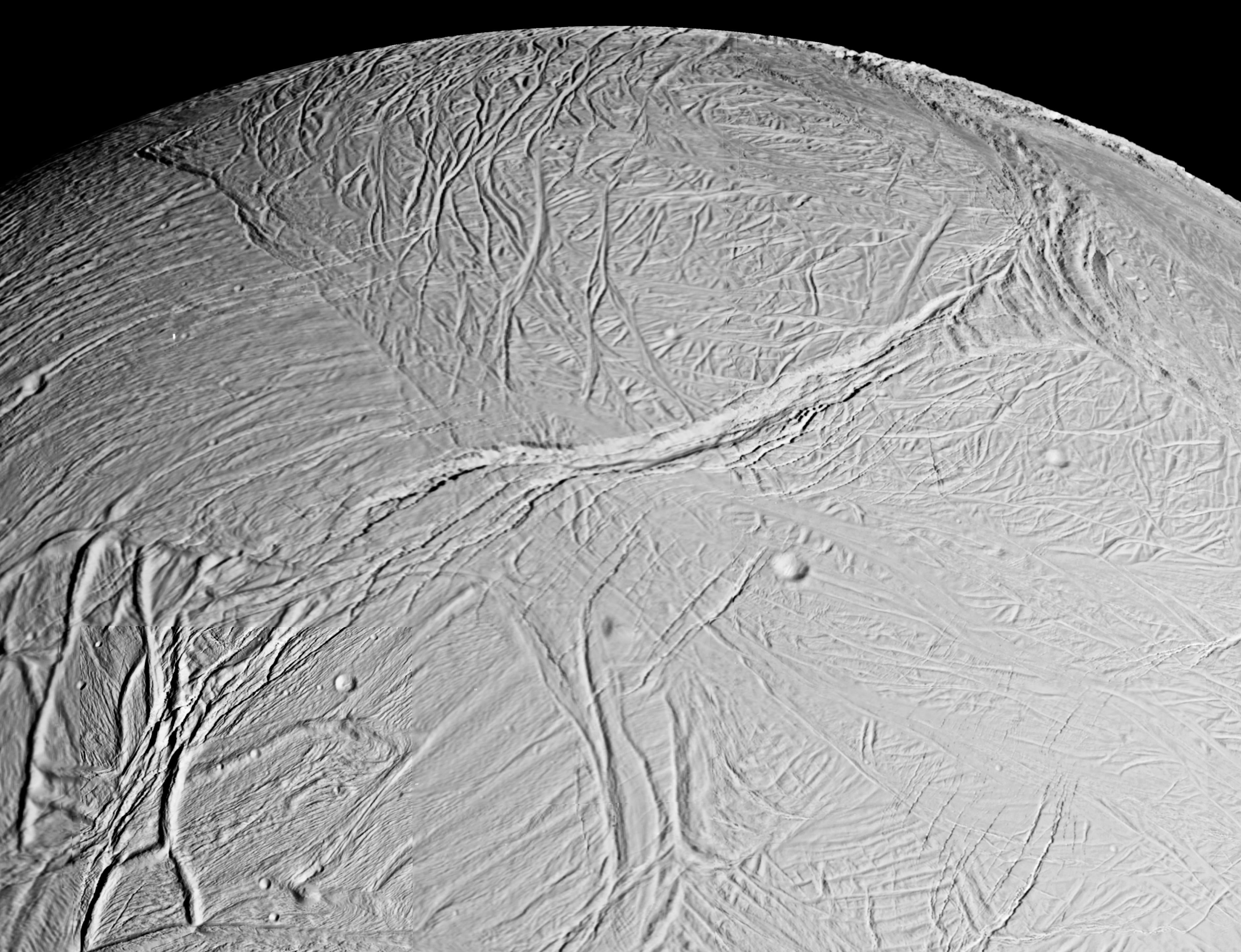Found: Evidence That a Saturnine Moon Could Support Life
NASA discovered some hydrogen.

We’ve probably wondered if we’re alone in the universe for as long as we’ve been self-aware and gazed into the night sky. There could be intelligent life, maybe, but also perhaps some lonely, tiny cells somewhere that have managed to survive in some livable oasis in the cold, dark expanse of space. NASA says that it might be closer than we thought.
The agency announced Thursday that they’ve found evidence of hydrogen gas pumping into an ocean beneath the surface of Enceladus, a moon orbiting Saturn. Combined with carbon dioxide, the hydrogen could provide the right conditions for life “as we know it,” according to NASA.
“This is the closest we’ve come, so far, to identifying a place with some of the ingredients needed for a habitable environment,” administrator Thomas Zurbuchen said. ”These results demonstrate the interconnected nature of NASA’s science missions that are getting us closer to answering whether we are indeed alone or not.”
The gas was sniffed by Cassini, a spacecraft launched in 1997 that has been orbiting and studying the prominently ringed planet and its moons for years.
What might life there look like, should it exist? Probably nothing to get too excited about, and nothing you could see with the naked eye. We may know more in a decade or so, after the launch of the Europa Clipper, a spacecraft headed to Saturn with advanced detection instruments, slated to lift off in the 2020s.










Follow us on Twitter to get the latest on the world's hidden wonders.
Like us on Facebook to get the latest on the world's hidden wonders.
Follow us on Twitter Like us on Facebook